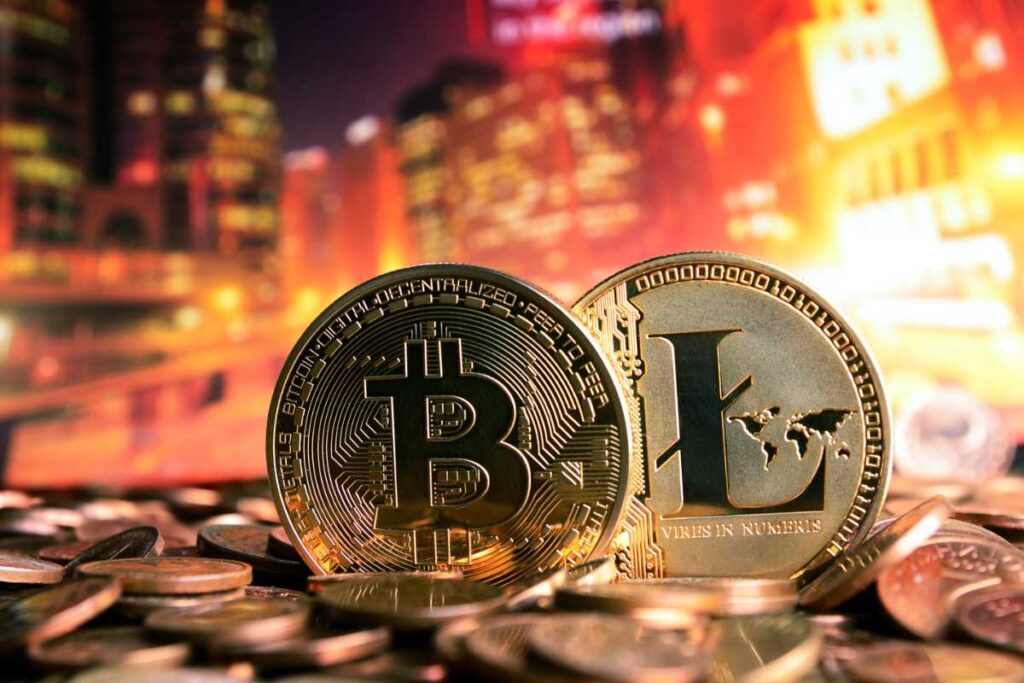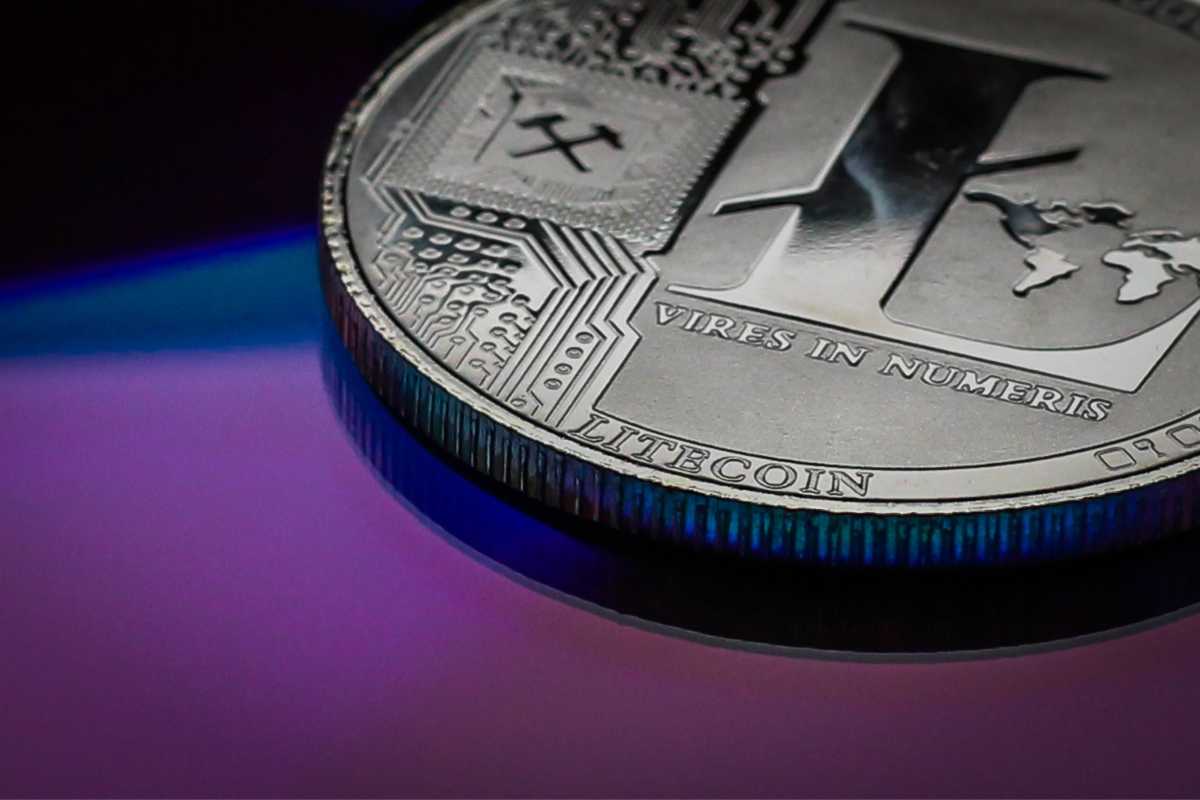Litecoin Maintains Strength, Surpassing Solana in Market Cap. Cryptocurrencies have been regarded as one of the world’s most volatile and changeable issues due to price swings and shifting adoption intentions, with many people trying to figure out what they are. From Bitcoin to Dogecoin, Ethereum to Litecoin, recent decentralized market emotions have been heavily influenced by geopolitical events and Fed rate rises. Nonetheless, factors such as demand, supply, regulatory changes, and market capitalization continue to influence price forecasts.
Almost no investing enthusiast has not attempted to solve the mystery of why cryptocurrencies fluctuate and what causes bitcoin to vary. Everyone wonders why bitcoin varies, what funds are invested in cryptocurrencies, how much Cardano will cost, and how to convert market data for insights that will lead to profitable investments.
The Litecoin (LTC) price provided a high momentum breakout from the $64.5 barrier with a 52.4% volume increase. As a result, this bullish breakthrough should increase purchasing momentum and drive prices higher. As the daily RSI slope increases progressively with the positive region, the cryptocurrency may exceed the immediate barrier of $69.5. LTC’s price performance on November 22 saw it rise 13.7% from $61.53 to $70.10.
What is Cryptocurrency?

Cryptocurrency is a peer-to-peer network that allows anybody, anywhere in the world, to make and receive money. Rather than real money transferred in the real world, cryptocurrency payments exist exclusively as digital recordings of particular transactions in an online database. Cryptocurrency is kept in digital wallets. The term cryptocurrency refers to the use of cryptography to confirm transactions. This entails extensive code to securely store and transport bitcoin data between wallets and public ledgers.
Bitcoin was the first cryptocurrency launched in 2009 and is still the most well-known. Because many buy bitcoin for speculative motives, prices may be quite unpredictable. Cryptocurrency is a sort of decentralized digital money that is based on blockchain technology and secured by encryption. A cryptocurrency, like US dollars, is a virtual exchange that uses cryptographic technologies and a system to validate financial transfers and govern monetary unit creation. Litecoin is also a type of cryptocurrency that makes payment easier.
What is Litecoin?
Payments can be made quickly and inexpensively to anyone using Litecoin, a peer-to-peer Internet cryptocurrency. Litecoin is an open-source, worldwide payment network decentralized with no central authority. Mathematics protects the network and facilitates money management. Litecoin has quicker transaction confirmation times and higher storage efficiency than the leading math-based money. With significant industry backing, transaction volume, and liquidity, Litecoin is an established medium of commerce that works in tandem with Bitcoin. Former Google employee Charlie Lee invented the cryptocurrency, which he described as a “lite version of Bitcoin” at one time.
The native cryptocurrency of Litecoin, an open-source blockchain project built on the foundation of Bitcoin, is LTC. Litecoin was created to have far quicker transaction speeds than Bitcoin and to be more scalable, earning it the moniker “the silver to bitcoin’s gold.”
Charlie Lee, a software engineer who formerly worked at Google and the cryptocurrency exchange Coinbase, designed the blockchain, which debuted on the bitcoin talk forum in October 2011.
What is Solana?
Solana is a crypto-computing platform that aspires to fast transaction speeds while maintaining decentralization. Solana, like Ethereum, is a cryptocurrency and a versatile platform for operating decentralized apps ranging from Degenerate Apes to the Serum decentralized exchange (or DEX). Its key uniqueness is its speed, achieved by a mix of revolutionary technologies, including a consensus mechanism called proof of History (PoH).
Solana can execute roughly 50,000 transactions per second, compared to 15 or fewer for Ethereum (the ETH2 upgrade, which is currently underway, is designed to make Ethereum much faster than it is now).
Because Solana is rapid, congestion and costs are kept to a minimum. The developers expect that rapid speeds and cheap rates may ultimately allow Solana to compete with centralized payment processors such as Visa. The native cryptocurrency of Solana is SOL, which is used to pay transaction fees and stakes. It also allows holders to vote on future updates. SOL may be bought and traded on exchanges such as Coinbase.
Litecoin Maintains Strength, Surpassing Solana in Market Cap

As a result of recent outperformance, Litecoin ($LTC) has been dubbed “the silver to Bitcoin’s gold,” surpassing the market value of Solana ($SOL). Litecoin was founded in 2011 as a derivative of Bitcoin and enabled peer-to-peer transactions with near-zero fees. However, it varies from the flagship coin in several respects, including faster transaction confirmation times, lower fees, a more massive-maximum supply of 84 million LTC, and other technological factors.
The crypto market’s flash crash during the FTX crypto crash doubled digital losses for most of the sector. Litecoin, on the other hand, has been unique. While LTC was affected by the first drop, it has recovered considerably faster than the other leading cryptos.
The crash prompted Litecoin prices to drop to a critical support level of $64.5. The drop dropped the cryptocurrency from $73.7 to $50.31, representing a 31.62% loss. However, when the market mood improved, the Litecoin price progressively recovered and began to reclaim lost ground. A positive reversal from the $50.31 support drove the price up to its current $68.6, completely erasing the prior drop.
Furthermore, with a 12% intraday gain, the LTC price broke through the $64.5 barrier and reattempted the previously announced breakthrough. A daily candle that closes above the broken resistance will provide a solid foundation for buyers to support future price growth.
With sustained buying, the altcoins should rise 7% higher to surpass another supply zone of $73.4.
These returns outperform the majority of other cryptocurrencies. For instance, Bitcoin was down 15% within the same time frame, while Ethereum was down 12%. In terms of weekly earnings, LTC has increased by over 9%, much more than the rest of the market.
LTC surpasses SOL in the cryptocurrency market cap list. As a result of Litecoin’s recent success, the cryptocurrency’s position in the bigger market has significantly increased. “Market cap,” is a measure of the total value of a cryptocurrency’s supply.
This was a big improvement from the crypto’s standing at the end of October when it was ranked 20th. The rise to 13th place had come at the price of Solana, who had slumped to 16th. This is owing to LTC’s strength and SOL’s recent weakness since the currency had declined by 13%.
Since June, #litecoin has outperformed the entire #crypto market.
TomCrown
No bailout, no downtime, no VC, no pre-mine, no ICO.
Just true decentralization.
Litecoin whales are back in business.
High whale activity is one of the main reasons for the recent LTC price movement. On-chain data supplier reported:
Addresses holding 1k to 100k $LTC have accumulated $43.4M in coins in the last two weeks, en route to the first price increase above $80 since May.
Furthermore, starting November 2, the largest whale cohort holding one million to ten million coins has expanded its bags. This cohort alone accumulated 2.4 million LTC. BitPay, the world’s largest crypto payment processor, introduced Litecoin functionality early this year. Since then, Litecoin has outperformed every other cryptocurrency in terms of the transaction share of the market. Only Bitcoin is more valuable than LTC in this aspect.
“Boring” Litecoin provides safety.
The market is likely looking for stability due to FTX’s repercussions, which have led to Litecoin’s comeback. Since FTX began displaying indications of collapse, market cap withdrawals have exceeded $228 billion, causing token values to plummet. Especially regarding FTX-affiliated projects such as FTT and SOL, with the former languishing below the top 200.
In response to the current market turmoil, Alan Austin, Managing Director of Litecoin Foundation, recently remarked, “Have you guys had enough excitement yet?” Austin was alluding to Litecoin’s “boring” reputation, which lacks glitz but provides holders with a high level of reliability in exchange. In addition to Bitcoin, Litecoin has a history of 11 years in and around the large caps to back it up.
On-chain analytics reveal that users are holding LTC.
According to Glassnode research, users increasingly see Litecoin as a store of value rather than a payment token, which is its core use case.
Since Q1 2021, the quantity of Litecoin held or lost has continuously increased. According to the graph below, nearly 20 million LTC now fall into this group.
Revived Supply Last Active 5+ Years is the quantity of Litecoin inactive five years before the data point. The graph below depicts a high idle supply of roughly 150,000 LTC in late 2017.
LTC coins have been substantially highly active ever since. However, recent trends indicate that LTC investors are again beginning to hold their tokens, but not to the same extent.
Long-term investors are still not selling their Litecoin, which may be another element in LTC’s price revival and stability.
Litecoin’s 30-day MVRV (ratio of market value to realized value) had also increased beyond 15%, according to on-chain statistics, suggesting that the currency may be approaching a risky area. As a result, we should expect its LTC price to decline shortly. However, according to the report:
The 365-day MVRV reveals that long-term traders are FINALLY back in positive territory for the first time since December 2, 2021. This key turning point could signal short-term optimism that may fuel a price rise after the short-term trading returns settle down slightly.
Another reason for the current positive feeling in LTC is the imminent reward halving, which is expected to occur in eight months. Litecoin’s third halving event might result in a favorable shift in LTC’s price.
Conclusion
In conclusion, Litecoin ($LTC), a peer-to-peer Internet cryptocurrency that allows for quick, low-cost payments to anybody on the planet, has been a resilient cryptocurrency since its inception in 2011. Despite experiencing a major setback during the FTX crypto crash in April 2021, it has recovered considerably faster than other leading cryptos. This is a testament to the strength of Litecoin’s underlying technology, which is designed to provide a secure, fast and low-cost global payment system. The Litecoin (LTC) price provided a high momentum breakout from the $64.5 barrier with a 52.4% volume increase.
As a result, this bullish breakthrough should increase purchasing momentum and drive prices higher. As the daily RSI slope increases progressively with the positive region, the cryptocurrency may exceed the immediate barrier of $69.5. LTC’s price performance on November 22 saw it rise 13.7% from $61.53 to $70.10. Despite experiencing some losses, the cryptocurrency has bounced back faster than the rest of the sector and is now outperforming the market, surpassing Solana ($SOL) in market value. As a result, Litecoin has firmly established itself as the “silver to Bitcoin’s gold” in the cryptocurrency market.
We at Coinxwire offers number one business blockchain and crypto news network on the planet.
Frequently Asked Questions(FAQs)
- What makes Litecoin unique?
Ans: Litecoin is unique because it is seen as a “boring” cryptocurrency that lacks glitz but gives holders a high level of reliability in exchange.
- How was Litecoin affected by the FTX crypto crash?
Ans: The crash caused Litecoin prices to drop to a critical support level of $64.5. The drop dropped the cryptocurrency from $73.7 to $50.31, representing a 31.62% loss. However, when the market mood improved, the Litecoin price progressively recovered and began to reclaim lost ground.
- What does on-chain analytics reveal about LTC?
Ans: On-chain analytics reveal that users are holding LTC, and since Q1 2021, the quantity of Litecoin hoarded or lost has continuously increased over time.















